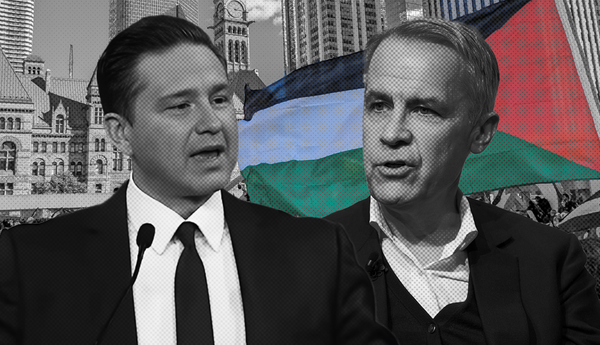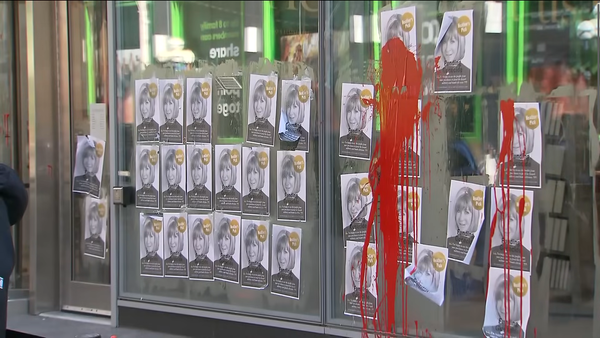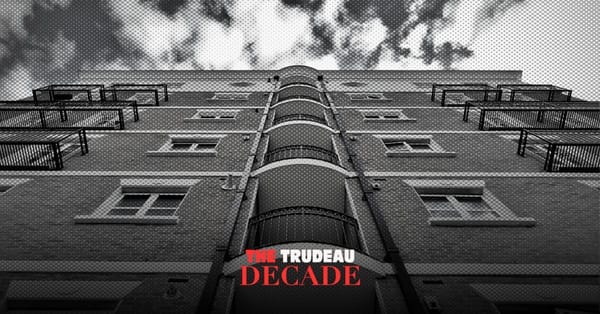Public transit systems across Canada have suffered massive losses of ridership and fare revenue due to COVID-19, resulting in unprecedented layoffs and service cuts.
Even as riders start to return to routine transit usage, many systems are still operating at heavily reduced capacity. The Toronto Transit Commission (TTC), for example, has only hired back 150 of the 450 workers laid off in April, despite previously pledging to restore full service at 30 per cent of pre-pandemic ridership, which has been surpassed.
After months of the federal government refusing to intervene — with Prime Minister Justin Trudeau claiming “operation of transit is more of a municipal and provincial responsibility” — a dedicated transit bailout of $1.8 billion was finally announced in mid-July.
But unlike the $25 billion transit package awarded in March by United States President Donald Trump that was a 100 per cent federal share not requiring any contributions from lower levels of government, the federal Liberals conditioned their transit funding on being matched by the provinces and territories in a 50-50 split.
The federal government’s refusal to fully fund the bailout has led to several calamitous outcomes. New Brunswick’s government simply opted out of the cost-sharing program, further starving systems like Saint John Transit.
In Ontario, something arguably even more insidious is happening, with the Doug Ford government itself placing conditions on releasing transit funding by requiring municipalities to “review the lowest performing bus routes and consider whether they may be better serviced by microtransit.” This move follows the province awarding $1.5 million grants in 2019 for four-year microtransit pilot projects.
This condition might not sound like that big of a deal. But the seemingly reasonable concept of “microtransit” is code for handing over transportation to vampiric companies like Uber — resulting in more congestion and emissions, greater labour exploitation, fragmented and less accessible service, and public subsidies to tax-avoiding corporations.
Right-wing governments are exploiting the pandemic to foist a Faustian bargain on municipalities where they can only receive desperately needed funding to rebuild transit ridership if they agree to allow further undermining of their system by companies that want to destroy transit.
Here are some of the problems with microtransit.
Microfailures
The fantasy of microtransit has been around since 2015 or so, when urban issues outlet CityLab proclaimed the “movement” was “changing urban mobility.” Edmonton has been toying with the idea since 2017, with it enjoying a resurgence since the city introduced a “bus network redesign” that eliminated nearly 100 routes.
Transit consultant Jarrett Walker, a renowned critic of microtransit and many other supposed tech solutions to transit demands, identifies three key characteristics of the idea: flexible and on-demand routing, public subsidies for private businesses, and the use of smartphone apps to summon and pay for rides. These include shared ride-hailing trips in standard cars (like UberPool and Lyft Line) or more bus-like trips in vans or minibuses.
Microtransit doesn’t follow a predetermined path like a bus — instead meandering between constantly shifting pick-up and drop-off points — which means that it carries far fewer people than even the most inefficient fixed-route bus. Such an individualized model is often critically important for people with disabilities who use paratransit, but expanding the approach to replace conventional transit is a recipe for disaster.
Many of the most supposedly promising examples of microtransit— Leap Transit, Chariot and Bridj — have shut down operations in their test sites of California and Kansas City, with Angie Schmitt of StreetsBlog USA dubbing the idea a “consistent, dismal failure.”
A textbook example of how microtransit can fail on multiple fronts is Innisfil, Ont., the town of more than 36,000 people located 75 kilometres north of Toronto that has contracted and subsidized Uber to operate a “transit” system.
As reported by CityLab, the original arrangement introduced in 2017 was a $3 to $5 flat rate to predetermined community hubs such as the library, rec complex and food bank, or $5 off standard fares to other places in the town.
But only two years later, in April 2019, the flat fare was raised by $1, trip discounts off standard fares decreased to $4 and a 30-trip-per-month cap was introduced (the cap can be appealed on a case-by-case basis). These changes were requested by Uber as a way to control costs.
A flat fare of $4 is steep for a supposed “transit” service: The TTC, which has one of the most regressive fare arrangements in North America, charges $3.25 for a one-way trip. Moreover, an unhappy Innisfil resident told CityLab about the trip cap: “I would never get on a bus in Toronto and hear the driver say, ‘Sorry, but you’ve hit your cap.’ Uber was supposed to be our bus.”
Almost 70 per cent of riders reported they were satisfied with the service. But as Walker emphasizes, feelings about microtransit don’t trump facts, describing Innisfil’s arrangement to the Guardian as nothing “other than a more expedited and abundant taxi system.”
While the Uber contract was introduced as a method to save costs compared to fixed-route buses, annual subsidies have skyrocketed from $150,000 in 2017 to $846,000 in 2019 (the average per-trip subsidy has increased from $5.60 to $8.25). To put that in context, it would have cost $270,000 a year for a single fixed-route bus in Innisfil, or $610,000 for two buses.
Moreover, unlike conventional public transit, an increase in riders won’t make microtransit more efficient — it just means more vehicles on the road. As a result, payments to Uber will only ever increase, which is just what the company wants. Remember: Uber explicitly sees public transit as competition, and wants to replace it “one use case at a time.”
Despite a tripling in the number of drivers since 2017, the number one concern of Innisfil residents polled about the service was “driver availability,” closely followed by “wait time to get picked up” and “cost to use the service.” People also complained about lack of service for shift workers, inefficient pooled rides and lack of accessibility for people with disabilities. One respondent said: “Think about the use of walkers and scooters. We can’t just rely on Barrie wheelchair vans that are mostly unavailable.”
This model is what Ontario is trying to leverage municipalities into using, despite the fact that all available evidence shows public transit remains by far the most efficient mode of transportation available — if properly funded and prioritized on streets.
The routes that Ontario’s right-wing government have identified as potentially being replaced by microtransit are those carrying fewer than 4,000 riders per day. Transit analyst Steve Munro reports 61 of 169 routes in Toronto fail to meet the 4,000 rider threshold. But per-route ridership numbers tell us next to nothing about the significance of the service to specific communities — particularly low-income riders, shift workers and people with disabilities — or within the broader network. So-called “feeder buses,” for example, bring riders to the busier routes. As Munro writes, “Those less productive parts contribute to the usefulness of the whole.”
Privatizing these routes to Uber or some other service doesn’t only threaten the affordability, reliability and accessibility of transit service along the individual route: it undermines the viability and success of the entire network.
Fighting back
The Ontario government knows what it’s doing by floating this microtransit condition. They don’t care about evidence — privatizing transit is an ideological assault, in piecemeal form, against the working-class.
This isn’t the first time the Ford government has tried this. Last year, they attempted to “upload” the TTC’s subway to provincial control, which advocacy group TTC Riders warned would lead to “higher fares on the subway, reduced service, and less say for riders.” While the subway upload idea was beaten back with dedicated organizing, the policy trade-off was the city’s acceptance of the proposed Ontario Line — which would be built using a public-private partnership and, according to TTC Riders, “leaves the door open to privatization.”
Along with the microtransit condition, the Ontario government is also trying to force transit agencies, including the TTC, to engage in discussions about “new possible governance structures” with Metrolinx, the quasi-privatized agency that operates GO Transit with a notoriously undemocratic structure. These requirements could further reduce local control and accountability of transit decision-making.
Well-funded public transit results in more unionized workers, lower or free fares, fewer private vehicles on the roads and constituencies that will organize to defend it from attack. Conversely, privatized transportation — whether through public-private partnerships or contracting service out entirely — means enormous profits at the cost of greater exploitation of workers and riders alike.
Microtransit is a failure by every metric — except for the one that expands capital accumulation. The Ontario government — and many others across Canada — recognizes that transportation politics are a class war. It’s time for us to treat it like it too.






